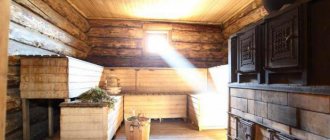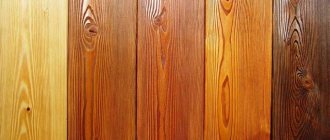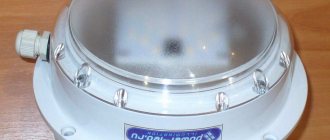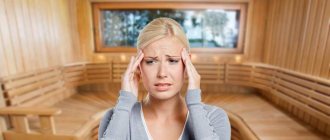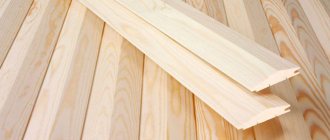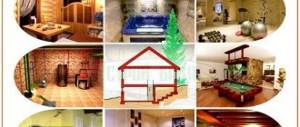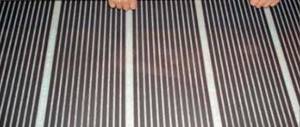Created: 06 Nov 2018
Press onto the stones by hand.
Succumb to the stones. Not by hand.
Use a bowl or water tank.
Evaporator, also known as steam generator. Built-in.
Arrangement of the finished steam room with equipment.
The increase in humidity in the sauna is due to water. During heating, the water begins to evaporate, due to which the “Russian bathhouse effect” occurs. Remember going to the bathroom: after you take a shower, the mirror fogs up. The same thing happens in the kitchen when you cook something. Mechanical hood can compensate for this phenomenon, but you get the point. If you turn on only cold water in the shower, the mirror will not fog up. Using these simple everyday examples, everyone can see in their own home that hot water creates humidity. In a sauna, if there is no water in any form, the heater will only dry the air, because in this case it will act as a heating device that increases the temperature. To create humidity in a steam room, you just need to allow the water to heat up and evaporate. There are many options for this. Let's consider everything.
Press onto the stones by hand.
Wood-burning and electric heaters have a compartment for loading stones. By splashing a ladle of water on the stones, you can get a short-term increase in humidity. You definitely knew about this method. It is better to splash a small amount of water on well-heated stones. The water should be warm. Cold water will make more noise, but the effect will not be enhanced. Our ultimate goal is to heat the water. Which water is easier and faster to heat? Of course it's hot. Cold water will cool the stones more, or even contribute to their destruction. Insufficiently heated stones will not be able to evaporate the water before it reaches the firebox or heating elements. This shortens the lifespan of the heater. For the same reason, you should not pour too much water.
Discussion: is it possible to use an electric oven?
There are cases when they succumb not only to stones, but also to the body of the stove, and even to the walls. This should not be done, because... heating efficiency is much less. This can only ruin the finish and equipment. Think about how much hotter the stones are than the walls. A wall will never heat water as much as stones in a stove. And although the body of the heater heats up much more than the walls, it is not at all designed to be doused with water.
How to increase humidity in a steam room - advice from professionals
The bathhouse is a real panacea for diseases. Bath procedures help improve blood circulation, thereby accelerating metabolic processes. But for comfort in the bathhouse you need an appropriate microclimate. The optimal temperature/humidity ratio is 60/60. At the same time, higher temperatures and humidity cause significant discomfort. And the lack of humidity makes the vaping procedure unpleasant. Therefore, many lovers of Russian baths are wondering how to increase the humidity in it.
How to make your stay in the steam room comfortable
A Russian bath requires knowledge and the ability to steam: in order for the steam in the bath to be “light”, you need to be a master of the bath business
There can be many reasons for the lack of humidity in the steam room. The most common of them is the incorrect selection of the stove. Modern stoves are designed for baths or saunas. The second option involves dry heat at high temperatures. As professionals say, if you increase the humidity in a hot bath (at a temperature above 70°C), you can simply cook it. If you have a problem with the stove, then it is more advisable to change it.
Some people advise placing a brick screen around the stove, which will partially absorb the heat. In this case, to achieve the desired level of humidity, you will have to pour a large amount of water onto the heater.
The ideal ratio of temperature and humidity in a Russian steam room is obtained when the heat-intensive heater is made of brick.
Another reason is the dry wood of the walls and ceiling. Dry wood quickly absorbs moisture. To prevent this from happening, pour water over the walls and ceiling while heating the steam room. While the stove is heating, the wood will absorb some of the water, and the rest will evaporate, increasing the humidity.
A leaking water tank attached to the stove will significantly increase the humidity. The water in the tank will heat up and evaporate. The amount of steam depends on the area of the open hole in the tank - the larger it is, the stronger the evaporation.
You can place a metal basin with water on the shelves in the steam room, which will evaporate during the steaming process.
Finally, before taking bath procedures, you can install an air humidifier or steam generator in the steam room.
This is how professionals advise increasing the air humidity in the steam room to the desired level.
Use a bowl or water tank.
Models of heaters with a built-in tank are available for sale. For wood-burning heaters, the tank can be located on the side or in the front. It has a tap for draining water.
|
The water tank can also be installed on the chimney.
Electric heaters can be sold with a water compartment built into the stones.
There is also a solution for ready-made saunas: an evaporator that is inserted into the stones. This flask will fit any heater. You just have to remove a few stones to build it in.
Evaporator, also known as steam generator. Built-in.
When choosing an electric heater, you come across models with the words “combi”, “vapor”, “steam”, etc. Such heaters are equipped with an additional compartment for water, in which it is heated from a separate heating element. On the remote control panel from the heater, not only the temperature, but also the humidity is set. The board is programmed to depend on temperature and humidity. Those. At higher temperatures, less humidity will be required to achieve a comfortable sauna microclimate. At a temperature of 90 °C it will not be possible to withstand 80% humidity, so you will not be able to set such parameters on the remote control.
For special convenience, the heaters can be connected to a water supply for automatic water supply through a flexible hose. Not all models have this feature, so when purchasing, you need to check whether this function is available.
How to increase the humidity in a steam room - advice from professionals
It may be unnecessary to remind you how to behave correctly in a bathhouse or sauna. Or maybe not? Do you know exactly what needs to be done and in what order so that it doesn’t end with increased heart rate, fainting, etc.?
Personally, I didn’t like steam rooms of any kind before. But when I went there with an experienced, enthusiastic person who explained everything to me and did it right, I realized that the correct soaring process is the way to be born again!
Baths. saunas. First, let's determine what the difference is? Now many people do not see the difference between a sauna and a bathhouse. But it still exists. Baths and saunas, intended for one purpose - warming up the human body, have somewhat different effects on it.
With high relative humidity in the steam room, a greenhouse effect is created, which prevents the body from losing heat through the release of sweat. Therefore, a wet steam room seems hotter than a dry one at the same temperature.
Typical outdoor humidity ranges from 40 to 70%, sometimes more. Air humidity in the sauna remains at 3-8%. Air humidity in a Russian bath is about 60%. Something to think about! The air temperature in a Russian bath is 55-70°C - this is two times lower than in a sauna. The thermal conductivity of humid air is much higher than dry air, so some believe that in a Russian bath deeper heating is achieved in less aggressive conditions (the body's reaction to environmental aggression is vasospasm and rapid heartbeat). In combination with the massage effect of a broom, the healing effect is simply incomparable (in a sauna, a broom will instantly dry out and fall off). But everything is individual and not for everyone. And it is determined in practice.
_____________________So, CORRECT PRACTICE_____________________
We take a shower or bath before entering the steam room. This is necessary in order to moisturize the skin and wash away all sorts of body and perfume odors, which is unacceptable in a sauna. But no need to get your head wet. A wet body should be carefully dried with a towel or sheet using blotting movements. You should not rub yourself before the steam room, as this will cause premature blood flow to the surface of the skin. Now let's go to the steam room.
The first session in the steam room is no more than five minutes. For the first time in the sauna, the recommended temperature is 80-90° (176-194°F), maximum 100°C (212°F). The air may be dry at first. Then we increase the humidity by throwing water onto the heater stones. Don't worry about it on the first run. The body has not yet warmed up well enough, and a little humidity will allow the broom to dry out and lose the leaves. We don't need this. We don’t climb onto the top shelf, we sit on the bottom one with our feet on the top one. We get used to the temperature regime. In a steam room, as the altitude changes, the air temperature changes sharply. It turns out that the temperature difference for a sitting person from feet to head is 15-20°C. Therefore, in a lying position (preferably on a towel or sheet), the entire body of the steamer will warm up evenly. The most important thing is not to overheat your head, so we put on a woolen knitted hat. It will maintain the head temperature with which you entered. It should be taken into account that high temperatures and high humidity can cause burns on the body. Therefore, the humidity in the sauna rarely exceeds 15%. In order to maintain a dry atmosphere in the sauna, the water supply to the heater should be excluded or limited. The addition of steam causes an acute tingling or burning sensation caused by the skin's reaction to excess moisture. Since the humidity in the steam room cannot be sharply reduced, if you experience a burning sensation, it is better to leave the steam room until the normal atmosphere is restored. In general, experienced steamers easily regulate the length of their stay in the steam room. Beginners should not rely on experienced steamers, but rather “listen” to their body.
ADVICE. The steam effect in the sauna will be significantly enhanced if you organize a small directional movement of hot air. For this, various heaters, fans, etc. are used. In this case, even with weak air movement, the process of evaporation of sweat from the surface of the skin increases so much that it no longer flows down the body. The skin is only slightly moisturized.
Visiting the steam room during one bathing process is limited to 2-4 visits. If you spend too much time in the steam room, the thermoregulation process is overstressed and instead of restorative processes, a reverse reaction may occur. Excessive heat causes rapid heart rate, difficulty breathing, nausea, ringing in the ears, and dizziness. It was so? Overheated! If at least one of these signs appears, you should immediately stop visiting the steam room and move to a cooler room.
We leave the steam room and dive into the pool. Or a river. Or a snowdrift. Personally, I have never practiced this matter. But we will have to somehow muster up the courage. For a healthy person, if the body is well warmed up, swimming in cold water or taking a cold shower does not pose any danger. But the pleasure from immersion in cold water is said to be great. For beginners, not seasoned people, at first you can start with a cool shower. But in any case, not gradually getting used to it, but plunging into the coolness all at once. Remember, the cooling procedure should be short. Don't get carried away! Even if it seems warm. After warming up, it is undesirable to immerse your head in water.
If experienced friends enthusiastically strive to drag you into the lake, assuring you of the thrill of this act, and you, with horror in your eyes and resting in the opening of the bathhouse, shout not to do this to you, you are right. You can easily give them the arguments of studies that show that the body’s adaptation to microclimatic conditions with high air temperatures in a steam room is observed only after 10-15 regular visits with a break of 5-7 days, that is, 3-4 months after the first visit. This circumstance should be taken into account when determining the method of taking water procedures to cool the body after a steam room. Otherwise you might get sick. After the specified period, the body gets used to contrasting temperature changes and responds adequately to them.
After cooling procedures, you should not immediately visit the steam room. It's better to rest and dry out. How can you rest if you want to get warm again as quickly as possible? And you don’t have to freeze to do this. Cooling for skin only. Therefore, the cooling process should be short. Upon leaving the water, the body continues to remove the heat accumulated in the steam room through the skin, which immediately warms you up, but does not make you hot.
During the stay in the steam room, the body loses some of the fluid, which can have a negative impact on the health of the steamer, expressed in the appearance of lethargy, weakness, heaviness in the head, pain in the calf muscles when walking, etc. Together with sweat, a large amount of mineral salts leaves the body, the loss of which affects the general condition of a person. With heavy steaming, the loss of water in the body can reach a significant amount (on average 1.5-2 liters for three or four visits to the steam room). If this loss is not compensated, then its deficiency in the body can affect well-being. To quench thirst, they use different drinks: kvass, fruit drink, etc. Alcohol is prohibited.
ADVICE. We make tea. At this stage it should be a sweatshop. So, per liter of boiling water - a tablespoon of black and green tea, St. John's wort, corn silk, lingonberry leaves, berries (dried, fresh) or raspberry leaves. Let it sit for twenty minutes, drink without sugar, and snack on dried apricots. With sweat, a lot of potassium is removed from the body, which must be returned back - we need it for normal cardiac activity (and there is a lot of potassium in dried apricots). While the tea is brewing, we make body masks. The ideal peeling for oily, porous skin is half a glass of cream plus a glass of table salt. Rub in, after five minutes rinse with warm water. Toning mask for all skin types - honey plus table salt (in a one to one ratio). The procedure is the same - rub in, wash off after five minutes. We drink tea and return to the steam room.
We returned to the steam room. The second time we sit and sweat longer – 10-15 minutes. Possibly on the top shelf. We sit, chat with colleagues, measure our successes, and sweat. We get out and dive into the pool again. Then we wash with soap and a washcloth.
Again we return to the steam room and whip ourselves with a broom - but don’t be zealous, otherwise it may lead to bruises.
ADVICE. An oak broom is useful for oily skin, and a linden broom for dry skin. For muscle pain and neuralgia, juniper is recommended. Birch can be considered universal. When I was little, we often went to the forest ourselves, got a cartload of birch branches and knitted brooms upon arrival. Individual and for dorms. Even entertaining. By the way, before steaming, do not forget to soak the broom in hot water, in a basin or bucket.
Once again we dive into the pool and actively swim to increase blood circulation. We brew tea again, but this time it’s different – vitamin tea.
ADVICE. Vitamin. Mix black tea, lemon balm, berries or black currant leaves, rose hips, mint. We drink with plenty of dried fruits, which are known to be rich in microelements and vitamins. We are glad that all this time we were not sitting in front of the TV with coffee and a cigarette.
Repeat the heating-cooling cycle as long as you enjoy it. Use a broom if desired. For many steamers, two rounds (entries into the sauna) are enough.
TIPS FOR VISITING THE STEAM ROOM
To increase the heat of the bath, in a well-heated bath or sauna there is no need to splash a lot of water on the stone backfill; just spray with a broom and the regime in the steam room will change. And the higher the temperature in the steam room, the less water you need to pour on the heated stones. If water is poured in large portions, the stones may cool down and the quality of the steam room will deteriorate sharply. In addition, with high humidity, the air in the steam room becomes heavy and unpleasant, making breathing difficult. If the humidity is too low (3-4%) and the temperature is high (120-130°), the air dries out the respiratory tract, and it is also unpleasant to breathe. Therefore, the regime in the bathhouse must be maintained, focusing on sensations. In a properly prepared steam room, breathing is easy and pleasant.
Often in the steam room, infusions of various herbs are used to succumb. The composition of such a cocktail should include plants that have a disinfectant, bactericidal, and antiseptic effect. These plants include: juniper, yarrow, sage, eucalyptus, mint, thyme, chamomile, calendula, birch, black poplar. Cocktails from these plants are used first to disinfect the steam room, and then the steamer himself. The healing aromas of these plants kill germs on the body of the steamer and in the upper respiratory tract.
You can mix aromatic and healing infusions in a basin, and put them into the oven with a ladle; or add various infusions to boiling water. All these aromas not only improve mood, but also penetrate the body and have a beneficial effect on the central nervous system, which affects the activity of various organs and systems, especially the heart and blood vessels. The walls of the steam room are sprayed with pine infusion; hypertensive people, very tired people with frayed nerves feel very good in such a steam room. Steam infused with herbs gives an inhalation effect. Mustard steam is very useful for the prevention of colds. It is not difficult to prepare: add a teaspoon of mustard to hot water, stir well and the mustard infusion is ready.
Steamers love oregano; It’s easy to imagine what a beneficial effect the steam room air, saturated with the aromatic substances of oregano, has on the body. Many bath cocktail recipes include thyme (thyme). This is a very fragrant plant. A cocktail of thyme, poured onto the stones of the steam room, helps neutralize the steam room from pathogenic microbes. Indispensable as a component of bath cocktails and St. John's wort, an herb for 99 ailments. A bath cocktail with St. John's wort is a good remedy for bronchitis, sore throat, and respiratory diseases. Bath cocktails containing chamomile are very useful.
Arrangement of the finished steam room with equipment.
For those cases where the sauna is already installed, you can install a separate device, similar to the one found in a heater with a built-in steam generator.
This solution is also suitable for a sauna with a wood stove. You can set the humidity on the remote panel. The device also has a temperature sensor, so the system will tell you what humidity can be limited at a given temperature.
adviсe
Russian bath: temperature regime
This steam room has a low heat level (60-70 degrees). In order to prepare the room for the future ceremony, it is heated from one to several hours, depending on the size and type of stove (stone or metal). If there are any defects in the building - rotten crowns, leaky floors - it is very difficult to achieve the desired temperature regime.
Additionally, you can warm up all muscles, joints and internal organs using brooms. They create a massage effect, and natural oils of juniper, oak, and fir increase the overall tone of the body.
